If you’re getting more serious with your weight training, then you may be starting to explore the idea of investing in weightlifting shoes. For newer lifters, investing in new weightlifting shoes can sometimes be seen as a right of passage.
Weightlifting shoes also referred to as lifting shoes and squat shoes, are a specific type of footwear that is designed to support lifting performance in a few key ways. If you’re new to weightlifting shoes, then you’ve likely wondered, “Do weightlifting shoes really help?”
The answer to that question, like many in the world of training and working out is, it depends. Weightlifting shoes can be incredibly helpful depending on their strategic use and the context in which they’re being used.
That being said, weightlifting shoes are not a must by any means, and if you don’t have the means for another pair of shoes or if you’re still uncertain if they’re right for you.
Hopefully, this article can help you navigate if weightlifting shoes will really help your training goals. There are a lot of conflicting opinions on this topic and my goal is to help you take an objective look at this topic.
What Are Weightlifting Shoes?
Weightlifting shoes are shoes built with a purposely elevated heel, stable outsoles, and additional midfoot security. Compared to general training shoes that feature heel-to-toe drops of 2-8mm, weightlifting shoes have much more aggressive drops that can range from 15mm-24mm.
The aggressive drop (elevated heel height) is what makes a weightlifting shoe a weightlifting shoe. It’s a construction feature that is designed to support lifting mechanics in exercises like squats, clean & jerks, and snatches.
If you’ve never worn weightlifting shoes and you’re wondering how they can change lifting mechanics, try the following:
- Perform a bodyweight squat barefoot.
- Perform a bodyweight squat in your normal gym shoes.
- Perform a bodyweight squat with two books under your feet. Try to find books that are about 1 inch in height.
Notice a difference in each of those squats? You likely felt that the squat with the elevated heel allowed you to stay more upright regarding your torso position and it may have felt more balanced.
When we elevate the heel when squatting, we’re putting the foot into a plantarflexed position (flexed down), which can then change how our knees track and how we balance our center of mass.
It’s important to note that every athlete and lifter will have varied experiences with the test above. And this is why there are so many conflicting opinions on this topic because most neglect to realize that individuality and anatomical differences will influence footwear selection.
In layman’s terms, weightlifting shoes will feel more useful to some lifters than others based on how they’re built and how they move.
This means that their “usefulness” can vary depending on the training and use context, which is something many can neglect when they put hard labels on weightlifting shoes as being a “must-have versus you don’t need them”.
Do Weightlifting Shoes Really Help?
Below, I’ll cover three common scenarios where weightlifting shoes can really help. This way, if you’re considering weightlifting shoes, you can cross-reference other situations where they’re useful and invest in them accordingly.
Note, I’m referencing the three examples below also because they’re the most common that I help athletes and clients navigate when discussing weightlifting shoes and their usefulness.
1. You Want Them to Support Your Squats
If you’re working on your squats and you find yourself falling forward or like you’re “unstable”, then weightlifting shoes may be useful for your training. Weightlifting shoes can also assist with squat depth in some cases if you’re struggling to hit adequate depth.
Regarding falling forward, a common issue that some lifter runs into with back squats, especially as they get heavier, is having their weight shift forward.
A forward torso in a back squat can result in a forward bar path and a squat that is less technically proficient. If you’re constantly having to save forward back squats, then you feel like your performance is capped when squatting at certain thresholds.
By using weightlifting shoes, you may find that you’re able to maintain a more upright torso and feel more stable in your squats. The elevated heel in a weightlifting shoe will typically allow a lifter’s knees to track more forward and feel comfortable “sitting back”.
When it comes to supporting squat depth, there are a lot of factors outside of weightlifting shoes that can influence depth such as femoral head structure, femoral neck length, hip capsule depth/anatomy, and your squat skill, to name a few.
However, that’s not to say weightlifting shoes can’t play a role in squat depth and performance. If weightlifting shoes, for example, promote more forward knee tracking for you, then you may find it’s a lot more comfortable to hit depth than without them.
In addition, if you find that is more balanced and stable when squatting when weightlifting shoes, then you’ll likely also feel comfortable squatting deeper. As a tool used to support hitting more squat depth, weightlifting shoes can be useful.
Pro Tip: Think of weightlifting shoes as tools and rotate them in with other footwear. For example, when I’m not in competition prep, I’ll program training blocks with the use of weightlifting shoes and without them.
I do this to expose my feet and ankles to different environments. Squatting to an adequate depth at high intensities without weightlifting shoes is really difficult for me due to my femur anatomy and lanky limbs.
So, I’ll rotate some blocks squatting without weightlifting shoes at sub-maximal intensities. By programming blocks where I purposely squat in barefoot shoes or barefoot at sub-maximal loads, I can expose myself to different stressors and environments.
This can give me great feedback on current mobility levels and restrictions, and it exposes my body to different stressors/environments which can vary the demands on the amount of hip, knee, and ankle flexion I need to be proficient.
Essentially, it’s great to have data from multiple training contexts to build a more well-rounded performance and understanding of what allows you to perform your best.
2. You Want to Start Competing In a Strength Sport
If you’re training to eventually compete in strength sports like weightlifting, powerlifting, CrossFit, or strongman, then you may also want to explore the use of weightlifting shoes.
In strength sports, performance output for the lifts or events that you plan to compete in will heavily dictate what you use for training. Everyone will be slightly different when it comes to the gear they use for strength sports and you’ll want to explore what allows you to perform your best.
For example, if you’re competing in powerlifting and you find out that you prefer to squat with an elevated heel versus flat shoes, then you’d want to use weightlifting shoes for your performance.
In the world of strength sports, it’s often a game of inches when it comes to performance and the biomechanics that improve the efficiency of your lifts. Weightlifting shoes can be useful tools for allowing you to perform your best.
Again, you don’t necessarily need weightlifting shoes for every strength sport, but I think they’re a tool worth experimenting with to see if they help you perform stronger.
3. You Want Variety With Your Training
Outside of squats and strength sports, weightlifting shoes can also be useful for giving you variety when it comes to footwear selection and how your shoes can influence biomechanics.
For example, let’s say you’re wanting to perform something like a quad-biased split squat or lunge. Weightlifting shoes can be awesome tools for supporting that training goal.
Weightlifting shoes can also be useful tools for machine exercises like leg presses and hack squats when you’re after a specific adaptation or when your anatomy doesn’t align with a particular machine.
Like knee sleeves and weightlifting belts, I think of weightlifting shoes as tools to keep in your lifter’s toolbox. They can be awesome tools for creating variety and allowing you to tackle specific adaptations during focused training blocks.
Frequently Asked Questions (FAQ)
Q:Do weightlifting shoes really help?
Q:Do you need weightlifting shoes for squatting?
Q:Why do weightlifting shoes help me squat deeper?
Takeaway Thoughts
Weightlifting shoes can be really helpful to a lifter’s performance depending on the goals at hand. If you’re wanting to improve your squat and you feel like your shoes are currently holding you back, then weightlifting shoes may be useful to explore.
In addition, weightlifting shoes are also useful and beneficial for those that plan to compete in strength sports. It’s common to use weightlifting shoes in strength sports like weightlifting, powerlifting, and strongman and CrossFit depending on the events.
At the end of the day, though, you don’t necessarily need weightlifting shoes to perform strongly in the gym. They’re just tools that can help you perform a take at hand a little more efficiently if they’re a style of footwear that resonates with your performance context.
If you have additional questions about weightlifting shoes and if they’d be useful for your training goals, drop a comment below or reach out to me on Instagram (@jake_boly or @that_fit_friend) and I can help you out.


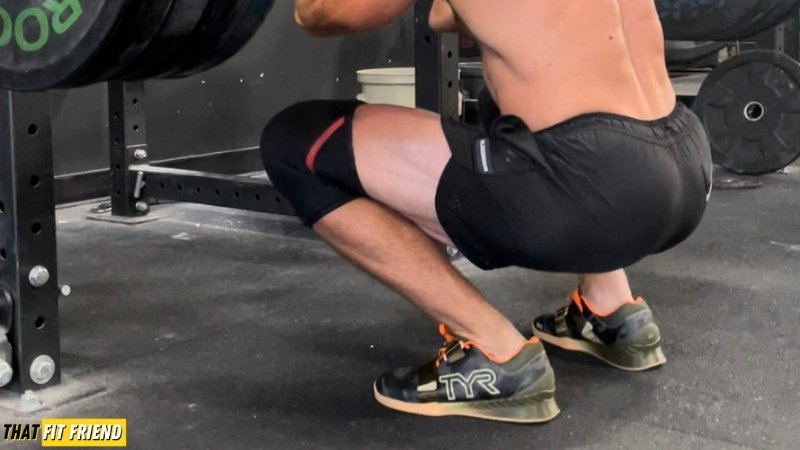


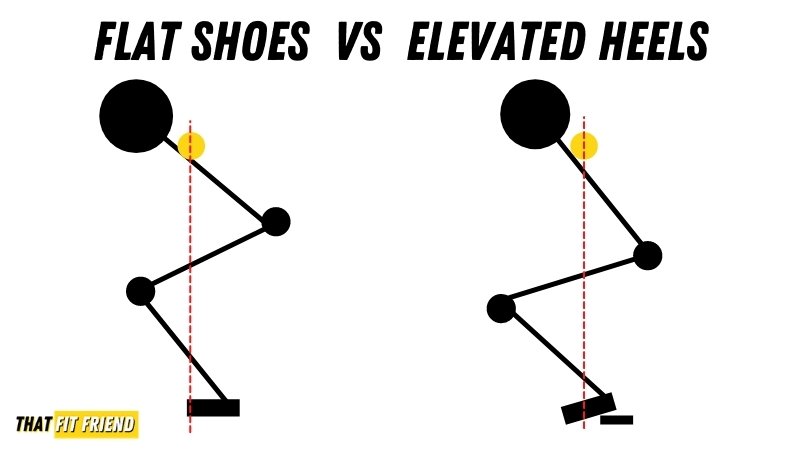











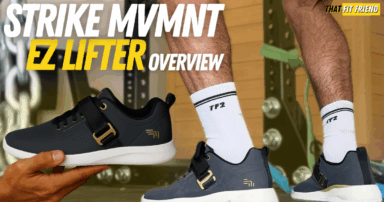
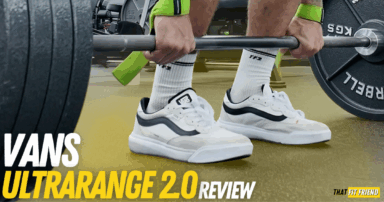
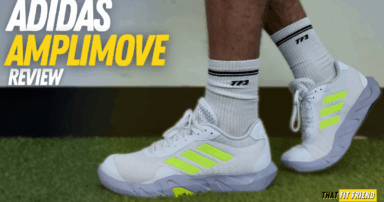
Add a Comment